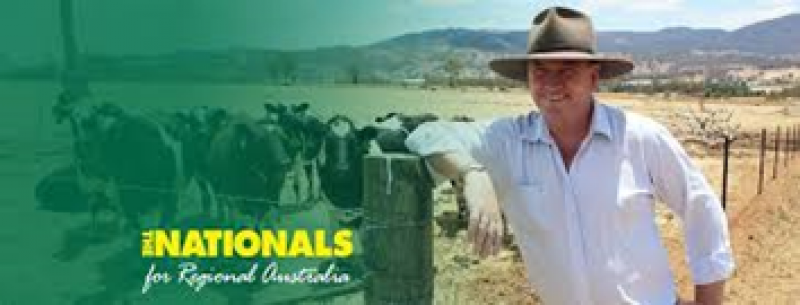Barnaby Joyce 'all about roads and mice' this week

Making Rural and Regional Road Safety Everyone’s Business
Australians are being urged to put safety first on regional and rural roads as Rural Road Safety Month gets underway.
Deputy Prime Minister and Minister for Infrastructure, Transport and Regional Development Barnaby Joyce said “Crashes on rural and remote roads account for almost two-thirds of the people who die on our roads each year. People driving on rural and regional roads are also more likely to be seriously injured on a per capita basis than on roads in our major cities. A major factor in this is the higher speeds on rural and regional roads. And it’s not just people from out of town or the city who are dying, it’s locals too.
In 2019, there were 778 deaths on our regional and remote roads. That’s 778 people going about their everyday business – heading to the nearest town for supplies, doing the school drop off, driving to the next farm gate, or heading home.
778 is too many. Even one life lost is one too many, and it is the job of every motorist and rider across Australia to bring these numbers down. Driving to the conditions, taking rest breaks, and choosing the safest vehicle you can afford using the ANCAP safety ratings or the Used Car Safety Rating program are steps all Australians can take now to keep themselves and their loved ones safe on regional roads.”
The Australian Government has committed $3 billion for the nationwide Road Safety Program.
For more information on Australian Government road safety initiatives visit www.officeofroadsafety.gov.au
Keeping The Mouse from The Door in New England
- Mouse numbers could rise again this spring
- Farmers should be alert for signs of increased mouse activity
- State and Australian Government programs can help farmers
Mouse numbers in Australia could rise again, depending on rainfall, as the weather warms in coming months.
Deputy Prime Minister and Member for New England, Barnaby Joyce said there were several options for farmers impacted by the mouse infestation.
Mr. Joyce said, “Since January this year, the Australian Pesticides and Veterinary Medicines Authority has issued seven emergency use permits to support mouse control.”
“Farmers can also access tax concessions. They may be able to claim an immediate deduction for capital expenditure on fodder storage assets, such as silos and hay sheds,” Mr. Joyce said.
“On a broader level, the Farm Household Allowance is available to affected farmers.
I also encourage the use the MouseAlert app which can help notify farmers about changes in mouse activity,” Mr. Joyce said.
Minister for Agriculture and Northern Australia David Littleproud said following good rain we are looking at a bumper harvest, and unfortunately these conditions are perfect for mice.
“Taking action early will be key in keeping mouse numbers down. It’s important that farmers get out into the paddocks to look for damage or other signs such as active burrows, and to act at the first signs of activity.
The Grains Research and Development Corporation also produces material and information to help with mice management, including printable chew cards for monitoring mouse activity,” Mr. Littleproud said.
“But remember there is support available for farmers who have had their businesses impacted by mice.
The first port of call for impacted farmers is the relevant state and territory authorities who have been on the frontline of the on-the-ground management of these infestations, and this hasn’t changed,” Mr. Littleproud said.
To find out more, visit www.agriculture.gov.au/ag-farm-food/mouse-infestation
